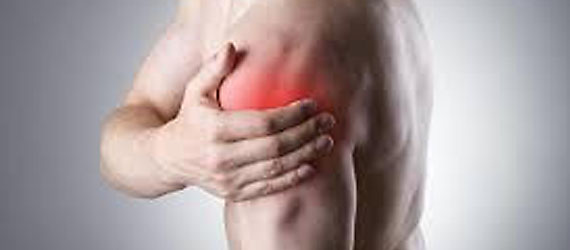Chiropractors primary practice is to perform an adjustment to a joint complex that has lost its ablity to move freely. When a muscle contracts, it pulls two bones closer together, creating active motion of a joint complex. The role of the joint complex is to allow motion to occur freely. Anything that creates an inflammatory reponse to a joint, such as trauma or repetitive/chronic stresses, creates scar tissue. Scar tissue resticts normal movement at the joint level and is often the root cause of our musculoskeletal pain.
Therapeutic Treatment (Deep tissue massage)

Musculoskeletal care is similiar to a chess game in that there are almost an infinite number of ways to win/get you better. The beautifull part of Chiropractic is the diversity in its approach. What works for one person may not work for another and it is good to be dynamic in your approach.
Dry Needling Therapy

Dry Needling Therapy, or "DNT", is used to create reversible micro traumatic lesions (noxious stimuli) to the soft tissues in order to create a healing response through normalizing inflammation, stimulating a localized immune response and promoting healing. It has proven to be extremely helpful in tough conditions of tendonopathy/tissue tearing of the elbow, wrist, shoulder, hip, knee, ankles and feet.
Sports Injuries

As with any injury, it is important to treat sports injuries sooner than later. When tissues are injured, the body tends to protect itself and change the bio- mechanics. With continued use, the body tends to adapt poorly and can lead to long-term issues. Chiropractic can help the tissue to heal more like normal by loosening these stiffening reactions associated with trauma.
Back Pain and Sciatic Pain

Sciatica is a general term to describe pain that travels down the back of the thigh and possibly the lower leg and foot. There are 3 common causes for Sciatica. The most common cause is a slower crawling pain from the lower back or hip that stays pretty focused to one side or the other...
Headache and Migraines

With headaches and migraines, more so than other musculo-skeletal conditions, there are often multiple other issues at play. I analogize headaches like a pot on the stove. If you have a large pot on the stove and it's filled with a big roast, carrots, onions, potatoes and water and you turn up the heat too high, it will boil over. If you take out the "Big roast" (big roast being the joint complex- tension associated with chiropractic), then you can often tolerate a good portion of the heat without boiling over. The other "triggers" of a headache can be food allergens, stress, hormones and/or other internal struggles (the vegetables).
Muscle Tension and Stress

Muscle tension in itself can stem from poor posture, sleeping position, daily activities. However, persistent muscle tension may have an underlying cause of segmental or joint dysfunction. When we have chronic repetitive stress and or direct trauma to connective tissue, they will heal stiff and bind. Most traumas occur when we are young and immortal. However, as this tissue binds and we remain active, it creates a tug-of-war between your joints and your muscle tissues. This struggle between the tissues often leads to chronic localized muscle tension and knots. Chiropractic care has the unique ability to break adhesions of the joint complex.
Car Accident and Work Related Injuries

When connective tissue is stretched further than it is anatomically allowed, it will tear. Joint capsule tearing or muscle tearing heals by binding with adhesions or scar tissue. As time goes on, the adhesions actually worsen not improve. Therefore, when people start feeling better within a week or two after an accident and then six months later start developing chronic headaches and pain, they have a hard time correlating the two. It's important to ensure that the tissue heels as close to normal as possible following an accident. Chiropractors have the unique ability to motion palpate joint segments and help these tissues heal closer to normal
Numbness in Arms and Hands

Numbness in the arms and hands can stem from one or multiple points of nerve compression. Compression of the nerve as it exits the vertebral segments are more commonly referred to as nerve root impingement. In addition to nerve root impingement, you can also get compression from the muscle tissue as the nerves move away from the spine to the upper extremities. This is more commonly known as peripheral nerve entrapment or thoracic outlet syndrome. Last, but not least, would be carpal tunnel syndrome compressing the median nerve as it passes through the carpal tunnel into the hand. It is important to be able to identify which one, if not multiple areas, is creating compression that lead to numbness in your arm and your hand.

